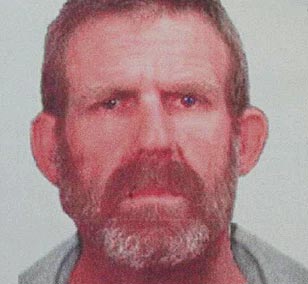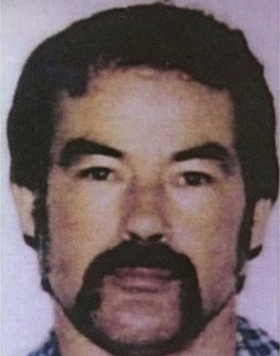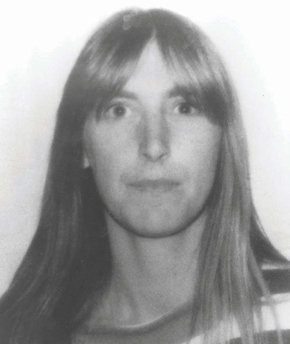Related Research Articles

Jane Nartare Beaumont, Arnna Kathleen Beaumont and Grant Ellis Beaumont, collectively referred to as the Beaumont children, were three Australian siblings who disappeared from Glenelg Beach near Adelaide, South Australia, on 26 January 1966 in a suspected abduction and murder.

Sarah MacDiarmid was a 23-year-old Scottish-Australian woman who disappeared from Kananook railway station in Melbourne, Victoria, Australia on 11 July 1990. She is presumed murdered, although no trace of her body has ever been found.

The Claremont serial killings is the name given by the media to a case involving the disappearance of an Australian woman, aged 18, and the killings of two others, aged 23 and 27, in 1996–1997. After attending night spots in Claremont, Perth, Western Australia, all three women disappeared in similar circumstances leading police to suspect that an unidentified serial killer was the offender. The case was described as the state's biggest, longest running, and most expensive investigation.
Peter Falconio was a British tourist who disappeared in a remote part of the Stuart Highway near Barrow Creek in the Northern Territory of Australia on the evening of 14 July 2001, while travelling with his girlfriend Joanne Lees.
The backpacker murders were a spate of serial killings that took place in New South Wales, Australia, between 1989 and 1993, committed by Ivan Milat. The bodies of seven missing young people aged 19 to 22 were discovered partially buried in the Belanglo State Forest, 15 kilometres (9.3 mi) south-west of the New South Wales town of Berrima. Five of the victims were foreign backpackers and two were Australians from Melbourne. Milat was convicted of the murders on 27 July 1996 and was sentenced to seven consecutive life sentences, as well as 18 years without parole. He died in prison on 27 October 2019, having never confessed to the murders for which he was convicted.

Bradley John Murdoch is an Australian criminal serving life imprisonment for the July 2001 murder of English backpacker Peter Falconio in Australia. He will be 74 when eligible for parole in 2032. Murdoch is being held in Darwin Correctional Centre in Darwin, Northern Territory. He has lodged two appeals against his conviction, both of which were unsuccessful. The High Court of Australia refused special leave to appeal on 21 June 2007. He is forbidden to talk to the press.
The Wanda Beach Murders, also known simply as "Wanda", were the unsolved murders of Marianne Schmidt and Christine Sharrock at Wanda Beach near Cronulla in Sydney, New South Wales, Australia, on 11 January 1965. The victims, both aged 15, were best friends and neighbours from the suburb of West Ryde, and their partially buried bodies were discovered the next day. The brutal nature of the slayings and the fact that they occurred on a deserted, windswept beach brought massive publicity to the case. By April 1966, police had interviewed some 7,000 people, making it the largest investigation in Australian history. It remains one of the most infamous unsolved Australian murder cases of the 1960s, and New South Wales' oldest unsolved homicide case.

Paul Charles Denyer is an Australian serial killer currently serving three consecutive sentences of life imprisonment with a non-parole period of 30 years for the murders of three young women in Melbourne, in 1993. Denyer became known in the media as the Frankston Serial Killer as his crimes occurred in the neighbouring suburbs of Frankston.

Robert Christian Boes Hansen, popularly known as the Butcher Baker, was an American serial killer active in Anchorage, Alaska, between 1972 and 1983. Hansen abducted, raped and murdered at least seventeen women. Many of the women abducted were released by Hansen into the wilderness and hunted with a Ruger Mini-14 and hunting knives. Hansen was captured in 1983 and sentenced to 461 years' imprisonment without the possibility of parole. He died in 2014 of natural causes at age 75.

The Easey Street murders refer to the knife murders of Suzanne Armstrong and Susan Bartlett in Collingwood, Victoria, Australia, an inner suburb of Melbourne, in January 1977. Described as "Victoria’s most brutal crime", the case remained unsolved despite a A$1 million reward being posted in 2017.

David John Birnie and Catherine Margaret Birnie were an Australian couple from Perth who murdered four women at their home in 1986, also attempting to murder a fifth. These crimes were referred to in the press as the Moorhouse murders, after the Birnies' address at 3 Moorhouse Street in Willagee, a suburb of Perth.
Vikki Petraitis is an Australian true crime author, based in Melbourne, Victoria.

The Crawford family murder was the killing of pregnant mother Therese Crawford and her three children at their home in Glenroy, Victoria, Australia, in July 1970. The family car was located at the bottom of a cliff at Loch Ard Gorge in Port Campbell on 2 July with the bodies of the four victims still inside. The husband and father of the decedents, Elmer Kyle Crawford, is the prime suspect in the murders and has not been seen since.
The Honolulu Strangler, also known as The Honolulu Rapist, is the nickname given to an unidentified serial killer who is believed to have killed five women in Hawaii from 1985 and 1986. He is the second known serial killer active in the state.

Ivan Robert Marko Milat, commonly referred to in media as the Backpacker Murderer, was an Australian serial killer who abducted, assaulted, robbed and murdered two men and five women in New South Wales between 1989 and 1992. His modus operandi was to approach backpackers along the Hume Highway under the guise of providing them transport to areas of southern New South Wales, then take his victims into the Belanglo State Forest where he would incapacitate and murder them. Milat is also suspected of having committed many other similar offences around Australia.
Paul Michael Stephani was an American serial killer. He was also known as the Weepy-Voiced Killer due to a series of telephone calls he made to police, anonymously reporting his crimes in a remorseful and high-pitched voice. Stephani killed three women in the Minneapolis–Saint Paul area.
Derek Ernest Percy was an Australian serial killer and convicted child killer who was also a person of interest linked to the mysterious deaths and disappearances of multiple children in the 1960s, including the Beaumont disappearances and the Wanda Beach murders.

Casefile is an Australian crime podcast that first aired in January 2016 and is hosted by an Australian man who remains anonymous. The podcast, produced by Casefile True Crime Podcast, is usually released on a Saturday for three consecutive weeks, with a bonus episode on the fourth week. The series deals with solved or cold criminal cases, often related to well-known murders and serial crimes. Unlike a number of similar podcasts, the series is fully scripted and narrated, while relying primarily on original police or mass-media documents, eyewitness accounts, and interview or public announcement recordings.

Michele Brown was a 25 year old woman who was found deceased behind a gun shop in Frankston on 14 March 1992. Her cause of death has not been determined, however she is presumed to have been murdered. There is a A$1 million reward for information leading to the arrest of her killer.
References
- 1 2 3 4 5 6 7 "Case 46: The Frankston and Tynong North Serial Killer - Casefile: True Crime Podcast". Casefile: True Crime Podcast. 19 February 2017. Retrieved 14 September 2018.
- ↑ "Tynong North and Frankston killings remain some of Australia's worst unsolved murders". Herald Sun. Retrieved 14 September 2018.
- 1 2 Silvester, John (16 August 2013). "Six women murdered but still no conviction". The Sydney Morning Herald. Retrieved 14 September 2018.
- ↑ "Australian True Crime: Cold Case: The Frankston and Tynong North Serial Killer - #39 on Apple Podcasts". Apple Podcasts (in Japanese). Retrieved 20 August 2020.
- 1 2 3 4 "Police offer $6 million reward to catch Tynong North serial killer". ABC. Retrieved 14 September 2018.
- 1 2 3 4 "Cold case detectives launch a fresh hunt for serial killer". The Age. Retrieved 14 September 2018.
- 1 2 3 4 "Prime suspect in Frankston murders says he's innocent as cops announce record rewards". Yahoo7. Retrieved 14 September 2018.
- ↑ YouTube (8 February 2016), Tynongy Nth [sic] Murders Channel 7 , retrieved 14 September 2018
- ↑ McMillan, John Silvester, Ashleigh (30 August 2020). "Prime suspect in 40-year Melbourne murder mystery dies". The Age. Retrieved 31 August 2020.
{{cite web}}: CS1 maint: multiple names: authors list (link) - ↑ Silvester, John (21 November 2005). "Retired detectives back in the hunt". The Age. Retrieved 14 September 2018.